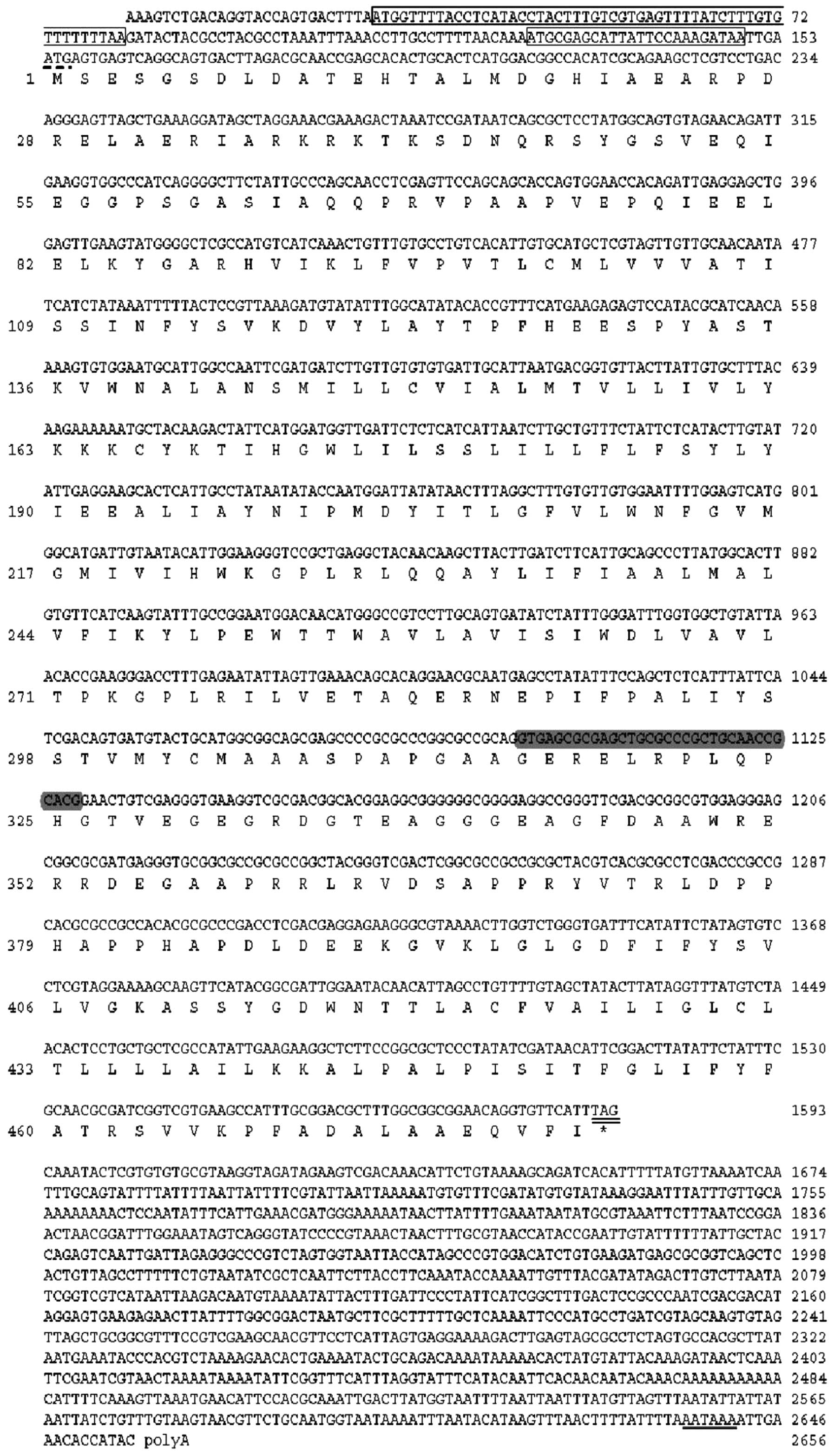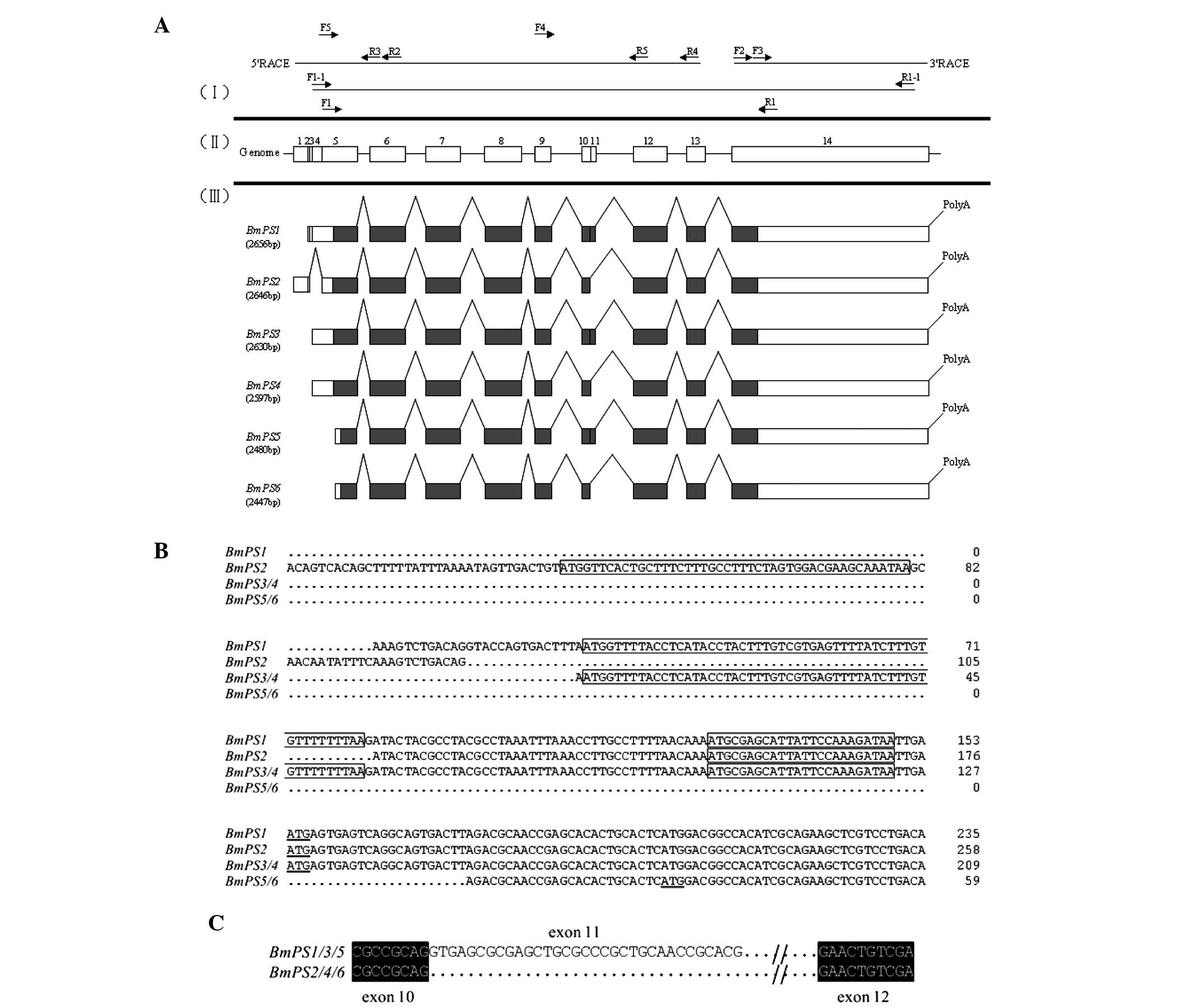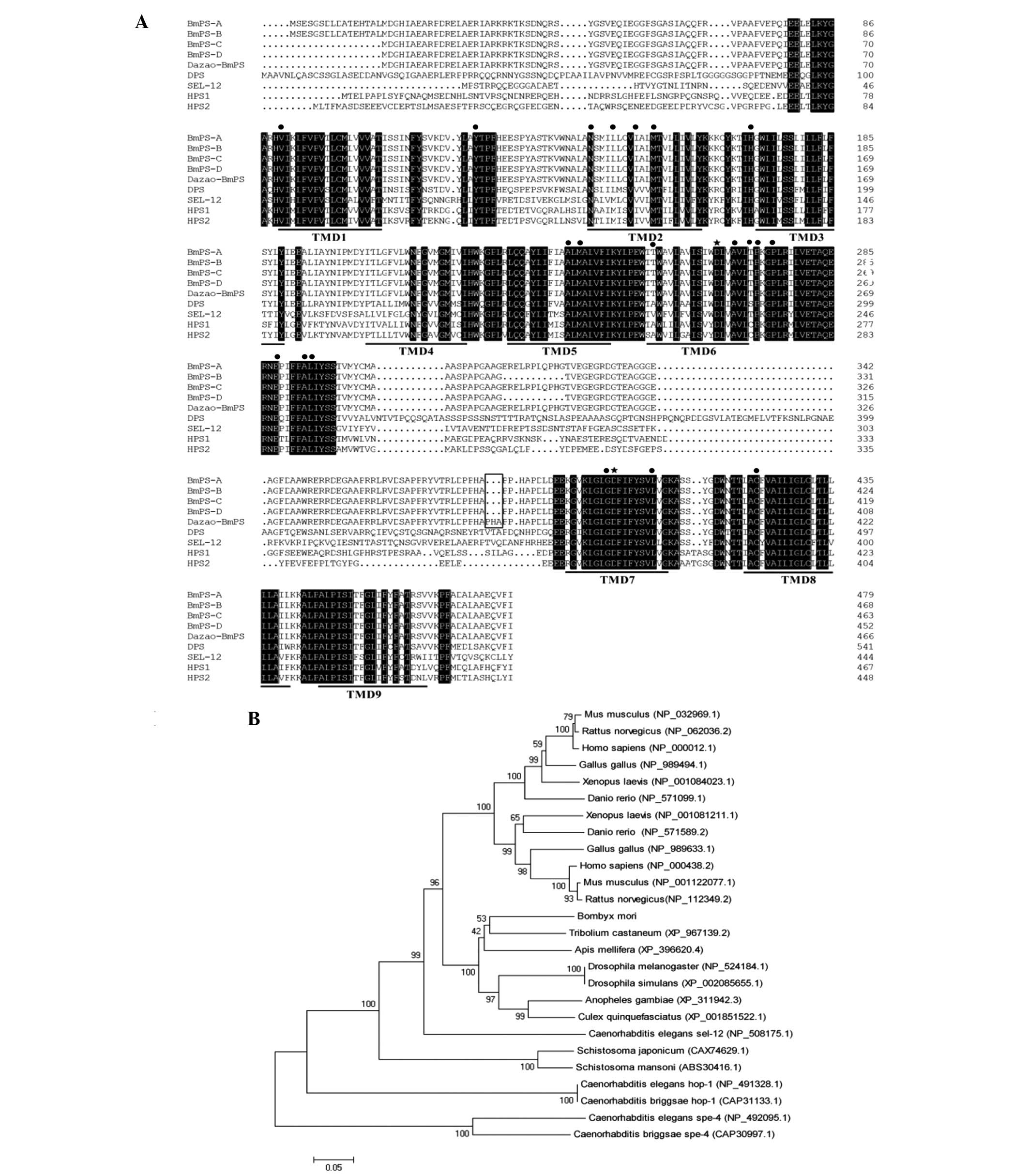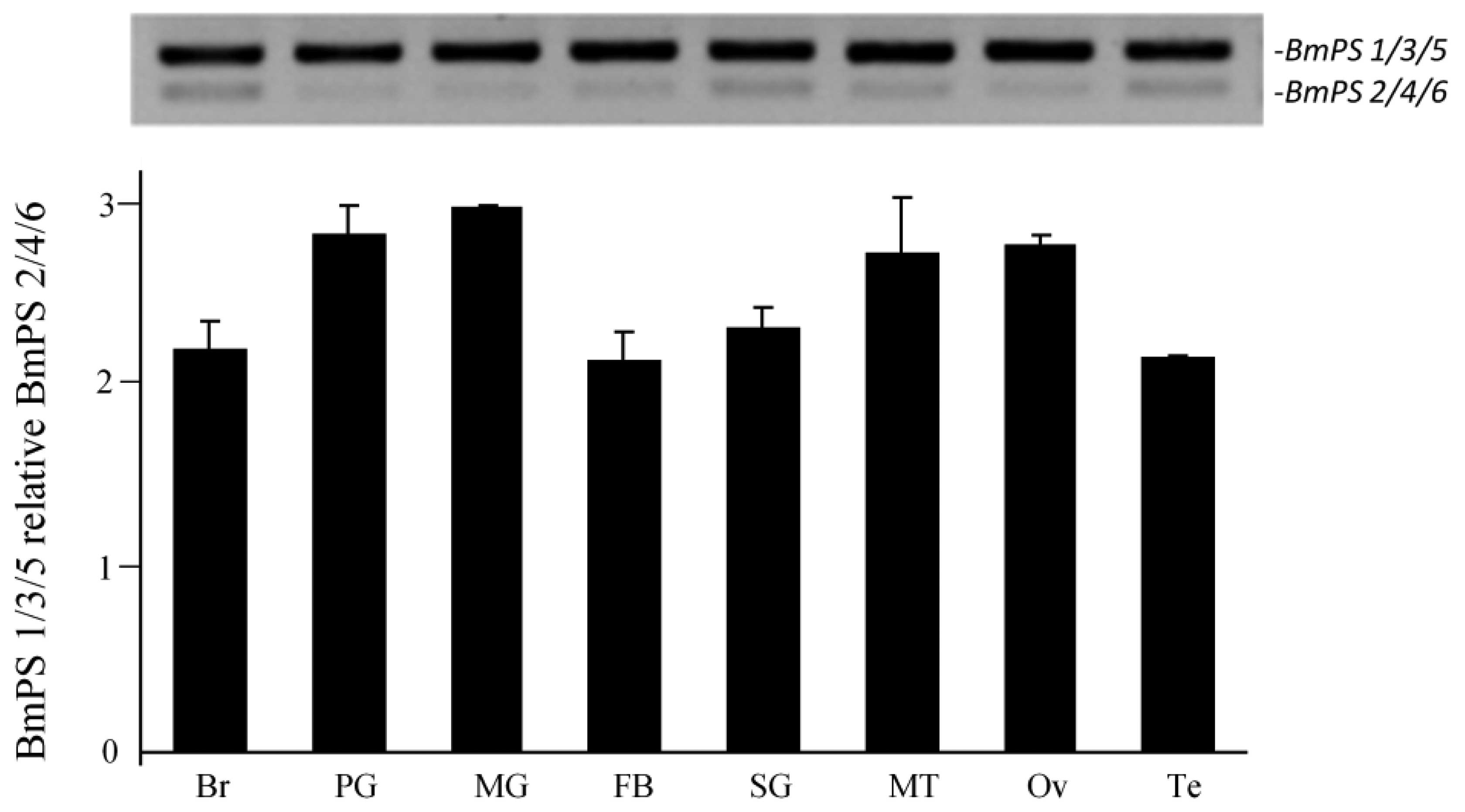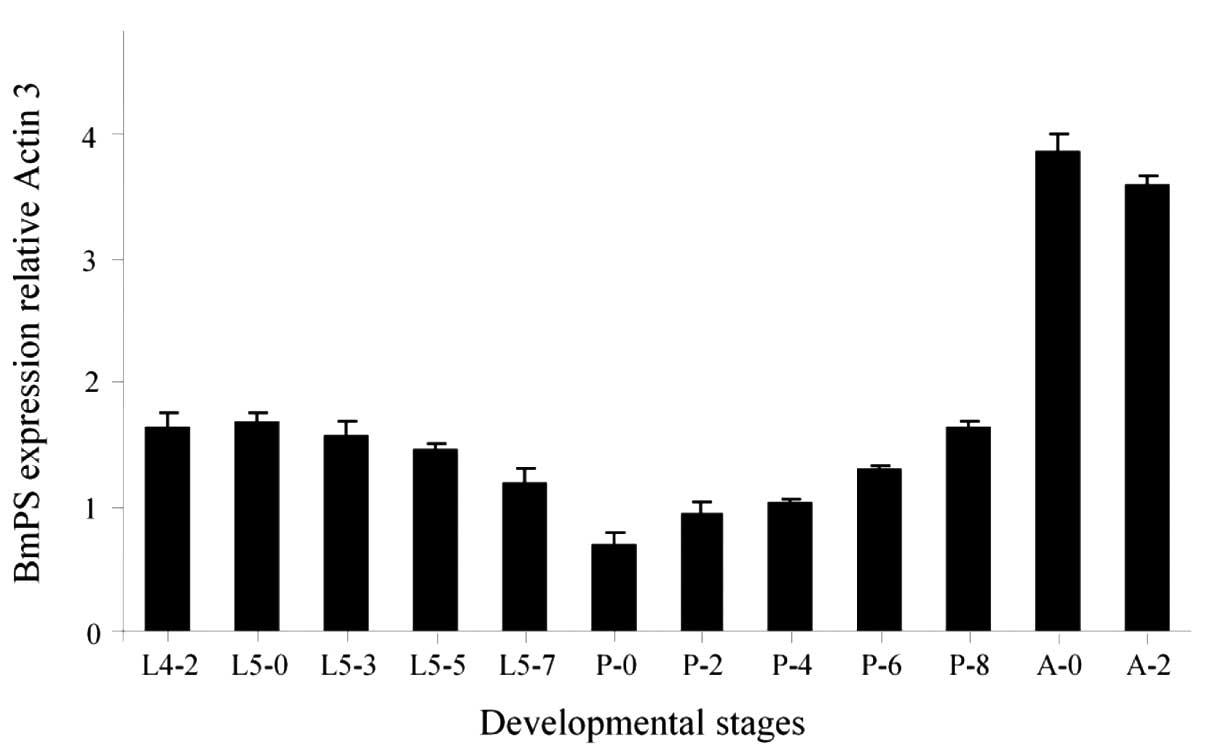|
1
|
Tanzi RE: A brief history of Alzheimer's
disease gene discovery. J Alzheimers Dis. 33(Suppl 1): S5–S13.
2013.
|
|
2
|
Zhang S, Zhang M, Cai F and Song W:
Biological function of Presenilin and its role in AD pathogenesis.
Transl Neurodegener. 2:152013. View Article : Google Scholar : PubMed/NCBI
|
|
3
|
Guerreiro RJ, Baquero M, Blesa R, Boada M,
Bras JM, Bullido MJ, Calado A, Crook R, Ferreira C, Frank A, et al:
Genetic screening of Alzheimer's disease genes in Iberian and
African samples yields novel mutations in presenilins and APP.
Neurobiol Aging. 31:725–731. 2010. View Article : Google Scholar :
|
|
4
|
Theuns J, Del-Favero J, Dermaut B, van
Duijn CM, Backhovens H, Van den Broeck MV, Serneels S, Corsmit E,
Broeckhoven CV and Cruts M: Genetic variability in the regulatory
region of presenilin1 associated with risk for Alzheimer's disease
and variable expression. Hum Mol Genet. 9:325–331. 2000. View Article : Google Scholar : PubMed/NCBI
|
|
5
|
Bekris LM, Yu CE, Bird TD and Tsuang DW:
Genetics of Alzheimer disease. J Geriatr Psychiatry Neurol.
23:213–227. 2010. View Article : Google Scholar : PubMed/NCBI
|
|
6
|
Schon EA and Area-Gomez E: Is Alzheimer's
disease a disorder of mitochondria-associated membranes? J
Alzheimers Dis. 20(Suppl 2): S281–S292. 2010.PubMed/NCBI
|
|
7
|
Sherrington R, Rogaev EI, Liang Y, Rogaeva
EA, Levesque G, Ikeda M, Chi H, Lin C, Li G, Holman K, et al:
Cloning of a gene bearing missense mutations in early onset
familial Alzheimer's disease. Nature. 375:754–760. 1995. View Article : Google Scholar : PubMed/NCBI
|
|
8
|
Rogaev EI, Sherrington R, Rogaeva EA,
Levesque G, Ikeda M, Liang Y, Chi H, Lin C, Holman K, Tsuda T, et
al: Familial Alzheimer's disease in kindreds with missense
mutations in a novel gene on chromosome 1 related to the
Alzheimer's Disease type 3 gene. Nature. 376:775–778. 1995.
View Article : Google Scholar : PubMed/NCBI
|
|
9
|
Dries DR and Yu G: Assembly, maturation
and trafficking of the gamma-secretase complex in Alzheimer's
disease. Curr Alzheimer Res. 5:132–146. 2008. View Article : Google Scholar : PubMed/NCBI
|
|
10
|
De Strooper B: Aph-1, pen-2 and nicastrin
with presenilin generate an active gamma-secretase complex. Neuron.
38:9–12. 2003. View Article : Google Scholar : PubMed/NCBI
|
|
11
|
Bergmans BA and De Strooper B:
Gamma-secretases: From cell biology to therapeutic strategies.
Lancet Neurol. 9:215–226. 2010. View Article : Google Scholar : PubMed/NCBI
|
|
12
|
Querfurth HW and LaFerla FM: Alzheimer's
Disease. N Engl J Med. 362:329–344. 2010. View Article : Google Scholar : PubMed/NCBI
|
|
13
|
Baki L, Shioi J, Wen P, Shao Z, Schwarzman
A, Gama-Sosa M, Neve R and Robakis NK: PS1 activates PI3K thus
inhibiting GSK-3 activity and tau over phosphorylation: effects of
FAD mutations. EMBO J. 23:2586–2596. 2004. View Article : Google Scholar : PubMed/NCBI
|
|
14
|
Mhatre SD, Paddock BE, Saunders AJ and
Marenda DR: Invertebrate models of Alzheimer's disease. J
Alzheimers Dis. 33:3–16. 2013.
|
|
15
|
Bonner JM and Boulianne GL: Drosophila as
a model to study age-related neurodegenerative disorders:
Alzheimer's disease. Exp Gerontol. 46:335–339. 2011. View Article : Google Scholar
|
|
16
|
Moloney A, Sattelle DB, Lomas DA and
Crowther DC: Alzheimer's disease: Insights from Drosophila
melanogaster models. Trends Biochem Sci. 35:228–235. 2010.
View Article : Google Scholar :
|
|
17
|
Link CD: Invertebrate models of
Alzheimer's disease. Genes Brain Behav. 4:147–156. 2005. View Article : Google Scholar : PubMed/NCBI
|
|
18
|
Levitan D and Greenwald I: Facilitation of
lin-12-mediated signalling by sel-12, a Caenorhabditis elegans S182
Alzheimer's disease gene. Nature. 377:351–354. 1995. View Article : Google Scholar : PubMed/NCBI
|
|
19
|
Struhl G and Greenwald I: Presenilin is
required for activity and nuclear access of notch in Drosophila.
Nature. 398:522–525. 1999. View
Article : Google Scholar : PubMed/NCBI
|
|
20
|
Ye YH, Lukinova N and Fortini ME:
Neurogenic phenotypes and altered notch processing in Drosophila
Presenilin mutants. Nature. 398:525–529. 1999. View Article : Google Scholar : PubMed/NCBI
|
|
21
|
Guo Y, Livne-Bar I, Zhou L and Boulianne
GL: Drosophila presenilin is required for neuronal differentiation
and affects notch subcellular localization and signaling. J
Neurosci. 19:8435–8442. 1999.PubMed/NCBI
|
|
22
|
Mahoney MB, Parks AL, Ruddy DA, Tiong SY,
Esengil H, Phan AC, Philandrinos P, Winter CG, Chatterjee R,
Huppert K, et al: Presenilin-based genetic screens in Drosophila
melano- gaster identify novel notch pathway modifiers. Genetics.
172:2309–2324. 2006. View Article : Google Scholar : PubMed/NCBI
|
|
23
|
van de Hoef DL, Hughes J, Livne-Bar I,
Garza D, Konsolaki M and Boulianne GL: Identifying genes that
interact with Drosophila presenilin and amyloid precursor protein.
Genesis. 47:246–260. 2009. View Article : Google Scholar : PubMed/NCBI
|
|
24
|
Ye YH and Fortini ME: Apoptotic activities
of wild-type and Alzheimer's disease-related mutant presenilins in
Drosophila melanogaster. J Cell Biol. 146:1351–1364. 1999.
View Article : Google Scholar : PubMed/NCBI
|
|
25
|
Presente A, Boyles RS, Serway CN, de Belle
JS and Andres AJ: Notch is required for long-term memory in
Drosophila. Proc Natl Acad Sci USA. 101:1764–1768. 2004. View Article : Google Scholar : PubMed/NCBI
|
|
26
|
Knight D, Iliadi K, Charlton MP, Atwood HL
and Boulianne GL: Presynaptic plasticity and associative learning
are impaired in a Drosophila presenilin null mutant. Dev Neurobiol.
67:1598–1613. 2007. View Article : Google Scholar : PubMed/NCBI
|
|
27
|
Lu Y, Lv Y, Ye Y, Wang Y, Hong Y, Fortini
ME, Zhong Y and Xie Z: A role for presenilin in post-stress
regulation: Effects of presenilin mutations on Ca2+ currents in
Drosophila. FASEB J. 21:2368–2378. 2007. View Article : Google Scholar : PubMed/NCBI
|
|
28
|
Michno K, Knight D, Campussano JM, van de
Hoef D and Boulianne GL: Intracellular calcium deficits in
Drosophila cholinergic neurons expressing wild type or FAD-mutant
presenilin. PLoS One. 4:e69042009. View Article : Google Scholar : PubMed/NCBI
|
|
29
|
McBride SM, Choi CH, Schoenfeld BP, Bell
AJ, Liebelt DA, Ferreiro D, Choi RJ, Hinchey P, Kollaros M,
Terlizzi AM, et al: Pharmacological and genetic reversal of
age-dependent cognitive deficits attributable to decreased
presenilin function. J Neurosci. 30:9510–9522. 2010. View Article : Google Scholar : PubMed/NCBI
|
|
30
|
Ray WJ, Yao M, Nowotny P, Mumm J, Zhang
WJ, Wu JY, Kopan R and Goate AM: Evidence for a physical
interaction between presenilin and Notch. Proc Natl Acad Sci USA.
96:3263–3268. 1999. View Article : Google Scholar : PubMed/NCBI
|
|
31
|
Roncarati R, Sestan N, Scheinfeld MH,
Berechid BE, Lopez PA, Meucci O, McGlade JC, Rakic P and D'Adamio
L: The gamma-secretase-generated intracellular domain of
beta-amyloid precursor protein binds Numb and inhibits Notch
signaling. Proc Natl Acad Sci USA. 99:7102–7107. 2002. View Article : Google Scholar : PubMed/NCBI
|
|
32
|
Woo HN, Park JS, Gwon AR, Arumugam TV and
Jo DG: Alzheimer's disease and notch signaling. Biochem Biophys Res
Commun. 390:1093–1097. 2009. View Article : Google Scholar : PubMed/NCBI
|
|
33
|
Matsumoto Y, Sumiya E, Sugita T and
Sekimizu K: An invertebrate hyperglycemic model for the
identification of anti-diabetic drugs. PLoS One. 6:e182922011.
View Article : Google Scholar : PubMed/NCBI
|
|
34
|
Sekimizu N, Paudel A and Hamamoto H:
Animal welfare and use of silkworm as a model animal. Drug Discov
Ther. 6:226–229. 2012.PubMed/NCBI
|
|
35
|
Kaether C, Capell A, Edbauer D, Winkler E,
Novak B, Steiner H and Haass C: The presenilin C-terminus is
required for ER- retention, nicastrin-binding and gamma-secretase
activity. EMBO J. 23:4738–4748. 2004. View Article : Google Scholar : PubMed/NCBI
|
|
36
|
Wolfe MS: Gamma-secretase in biology and
medicine. Semin Cell Dev Biol. 20:219–224. 2009. View Article : Google Scholar : PubMed/NCBI
|
|
37
|
Fassler M, Li X and Kaether C: Polar
transmembrane-based amino acids in presenilin 1 are involved in
endoplasmic reticulum localization, Pen2 protein binding and
γ-secretase complex stabilization. J Biol Chem. 286:38390–38396.
2011. View Article : Google Scholar : PubMed/NCBI
|
|
38
|
Sato C, Takagi S, Tomita T and Iwatsubo T:
The C-terminal PAL motif and transmembrane domain 9 of presenilin 1
are involved in the formation of the catalytic pore of the
gamma-secretase. J Neurosci. 28:6264–6271. 2008. View Article : Google Scholar : PubMed/NCBI
|
|
39
|
Tolia A, Horré K and De Strooper B:
Transmembrane domain 9 of presenilin determines the dynamic
conformation of the catalytic site of gamma-secretase. J Biol Chem.
283:19793–19803. 2008. View Article : Google Scholar : PubMed/NCBI
|
|
40
|
Sobhanifar S, Schneider B, Löhr F,
Gottstein D, Ikeya T, Mlynarczyk K, Pulawski W, Ghoshdastider U,
Kolinski M, Filipek S, et al: Structural investigation of the
C-terminal catalytic fragment of presenilin 1. Proc Natl Acad Sci
USA. 107:9644–9649. 2010. View Article : Google Scholar : PubMed/NCBI
|
|
41
|
Shirotani K, Edbauer D, Capell A, Schmitz
J, Steiner H and Haass C: Gamma-secretase activity is associated
with a conformational change of nicastrin. J Biol Chem.
278:16474–16477. 2003. View Article : Google Scholar : PubMed/NCBI
|
|
42
|
Deng Y, Tarassishin L, Kallhoff V,
Peethumnongsin E, Wu L, Li YM and Zheng H: Deletion of presenilin 1
hydrophilic loop sequence leads to impaired gamma-secretase
activity and exacerbated amyloid pathology. J Neurosci.
26:3845–3854. 2006. View Article : Google Scholar : PubMed/NCBI
|
|
43
|
McCarthy JV, Twomey C and Wujek P:
Presenilin-dependent regulated intramembrane proteolysis and
gamma-secretase activity. Cell Mol Life Sci. 66:1534–1555. 2009.
View Article : Google Scholar : PubMed/NCBI
|
|
44
|
Boteva K, Vitek M, Mitsuda H, de Silva H,
Xu PT, Small G and Gilbert JR: Mutation analysis of presenillin 1
gene in Alzheimer's disease. Lancet. 347:130–131. 1996. View Article : Google Scholar : PubMed/NCBI
|
|
45
|
Chapman J, Asherov A, Wang N, Treves TA,
Korczyn AD and Goldfarb LG: Familial Alzheimer's disease associated
with S182 codon 286 mutation. Lancet. 346:10401995. View Article : Google Scholar : PubMed/NCBI
|
|
46
|
Boulianne GL, Livne-Bar I, Humphreys JM,
Liang Y, Lin C, Rogaev E and St George-Hyslop P: Cloning and
characterization of the Drosophila presenilin homologue.
Neuroreport. 8:1025–1029. 1997. View Article : Google Scholar : PubMed/NCBI
|
|
47
|
Hong CS and Koo EH: Isolation and
characterization of Drosophila presenilin homolog. Neuroreport.
8:665–668. 1997. View Article : Google Scholar : PubMed/NCBI
|
|
48
|
Calvo SE, Pagliarini DJ and Mootha VK:
Upstream open reading frames cause widespread reduction of protein
expression and are polymorphic among humans. Proc Natl Acad Sci
USA. 106:7507–7512. 2009. View Article : Google Scholar : PubMed/NCBI
|
|
49
|
Morris DR and Geballe AP: Upstream open
reading frames as regulators of mRNA translation. Mol Cell Biol.
20:8635–8642. 2000. View Article : Google Scholar : PubMed/NCBI
|
|
50
|
Scheper GC, van der Knaap MS and Proud CG:
Translation matters: Protein synthesis defects in inherited
disease. Nat Rev Genet. 8:711–723. 2007. View Article : Google Scholar : PubMed/NCBI
|
|
51
|
Wen Y, Liu Y, Xu Y, Zhao Y, Hua R, Wang K,
Sun M, Li Y, Yang S, Zhang XJ, et al: Loss-of-function mutations of
an inhibitory upstream ORF in the human hairless transcript cause
Marie Unna hereditary hypotrichosis. Nat Genet. 41:228–233. 2009.
View Article : Google Scholar : PubMed/NCBI
|
|
52
|
Hayden CA and Bosco G: Comparative genomic
analysis of novel conserved peptide upstream open reading frames in
Drosophila melanogaster and other dipteran species. BMC Genomics.
9:612008. View Article : Google Scholar : PubMed/NCBI
|
|
53
|
Yao P and Fox PL: Sex lethal and upstream
ORFs: A bait-and-trap system for ribosomes. Genome Biol.
12:1212011. View Article : Google Scholar : PubMed/NCBI
|
|
54
|
Tolia A, Chávez-Gutiérrez L and De
Strooper B: Contribution of presenilin transmembrane domains 6 and
7 to a water-containing cavity in the gamma-secretase complex. J
Biol Chem. 281:27633–27642. 2006. View Article : Google Scholar : PubMed/NCBI
|
|
55
|
Wanngren J, Frånberg J, Svensson AI,
Laudon H, Olsson F, Winblad B, Liu F, Näslund J, Lundkvist J and
Karlström H: The large hydrophilic loop of presenilin 1 is
important for regulating gamma-secretase complex assembly and
dictating the amyloid beta peptide (Abeta) Profile without
affecting Notch processing. J Biol Chem. 285:8527–8536. 2010.
View Article : Google Scholar : PubMed/NCBI
|
|
56
|
Guo YQ, Zhang SX, Sokol N, Cooley L and
Boulianne GL: Physical and genetic interaction of filamin with
presenilin in Drosophila. J Cell Sci. 113:3499–3508.
2000.PubMed/NCBI
|
|
57
|
Zhang SX, Gua Y and Boulianne GL:
Identification of a novel family of putative methyltransferases
that interact with human and Drosophila presenilins. Gene.
280:135–144. 2001. View Article : Google Scholar : PubMed/NCBI
|
|
58
|
Nowotny P, Gorski SM, Han SW, Philips K,
Ray WJ, Nowotny V, Jones CJ, Clark RF, Cagan RL and Goate AM:
Posttranslational modification and plasma membrane localization of
the Drosophila melanogaster presenilin. Mol Cell Neurosci.
15:88–98. 2000. View Article : Google Scholar : PubMed/NCBI
|
|
59
|
Song W, Nadeau P, Yuan M, Yang X, Shen J
and Yankner BA: Proteolytic release and nuclear translocation of
Notch-1 are induced by presenilin-1 and impaired by pathogenic
presenilin-1 mutations. Proc Natl Acad Sci USA. 96:6959–6963. 1999.
View Article : Google Scholar : PubMed/NCBI
|
|
60
|
Kang DE, Soriano S, Frosch MP, Collins T,
Naruse S, Sisodia SS, Leibowitz G, Levine F and Koo EH: Presenilin
1 facilitates the constitutive turnover of β-catenin: Differential
activity of Alzheimer's disease-linked PS1 mutants in
β-catenin-signaling pathway. J Neurosci. 19:4229–4237.
1999.PubMed/NCBI
|
|
61
|
Stutzmann GE, Caccamo A, LaFerla FM and
Parker I: Dysregulated IP3 signaling in cortical neurons of
knock-in mice expressing an Alzheimer's-linked mutation in
presenilin1 results in exaggerated Ca2+ signals and altered
membrane excitability. J Neurosci. 24:508–513. 2004. View Article : Google Scholar : PubMed/NCBI
|
|
62
|
Soriano S, Kang DE, Fu M, Pestell R,
Chevallier N, Zheng H and Koo EH: Presenilin 1 negatively regulates
beta-catenin/T cell factor/lymphoid enhancer factor-1 signaling
independently of beta-amyloid precursor protein and notch
processing. J Cell Biol. 152:785–794. 2001. View Article : Google Scholar : PubMed/NCBI
|
|
63
|
Lee MK, Slunt HH, Martin LJ, Thinakaran G,
Kim G, Gandy SE, Seeger M, Koo E, Price DL and Sisodia SS:
Expression of presenilin 1 and 2 (PS1 and PS2) in human and murine
tissues. J Neurosci. 16:7513–7525. 1996.PubMed/NCBI
|
|
64
|
Dillin A and Cohen E: Ageing and protein
aggregation-mediated disorders: from invertebrates to mammals.
Philos Trans R Soc Lond B Biol Sci. 366:94–98. 2011. View Article : Google Scholar :
|



